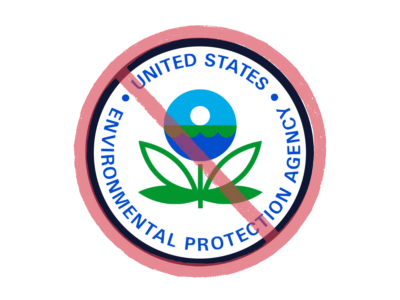Deregulating Methane No Matter What
Emmett Institute faculty submit letter opposing Trump’s proposed rollback on methane regulations

Recently, my colleague Sean Hecht and I jointly submitted a comment letter opposing a new EPA Proposed Rule that would roll back standards limiting methane emissions from oil and natural gas production, processing, transmission, and storage facilities.
This Proposed Rule essentially revokes two Obama-era regulations, finalized in 2012 and 2016, that first established these methane emissions standards. Together, these Clean Air Act (CAA)-based regulations limit the amount of methane that facilities who produce, process, transmit, and store oil and natural gas can emit lawfully. EPA enacted the regulations under its Clean Air Act Section 111 authority to set New Source Performance Standards for air pollution sources.
It’s certainly no surprise that the Trump administration EPA would seek to rescind methane regulations, especially those created by his predecessor. But it’s worth noting just how brazen this rollback truly is. In the Obama-era rules, EPA acknowledged that methane is a pollutant with harmful effects on the global climate and public health. Methane is a greenhouse gas with approximately 28-36 times the global warming potential of carbon dioxide. Methane, like other volatile organic compounds (VOCs), also contributes to ground-level ozone, which can harm lung tissue in individuals who live near the emissions source. EPA does not dispute these harms in the Proposed Rule, and even acknowledges that more methane will be emitted as a result of this Rule.
EPA provides several rationales for this rollback, none of which is persuasive. First, Trump told the agency to do so. On March 28, 2017, Trump published Executive Order 13783, which in part ordered the EPA to review Obama’s 2016 rule that established methane regulations, and, if deemed appropriate, either “suspend, revise or rescind the guidance, or publish for notice and comment proposed rules suspending, revising, or rescinding those rules.”
Additionally, EPA argues that the devices regulated facilities already capture and control methane, since the capture and control devices used to capture VOC emissions will also capture methane, making methane regulations redundant with those of VOCs. The problem with this argument, as we describe in more detail in our comment letter, is that EPA simultaneously in this Proposed Rule proposes a new interpretation of the CAA that results in abandoning the regulations that limit VOC emissions from all existing sources. So, while EPA insists that existing VOC capture and control devices are redundant with methane, at the same time, the Proposed Rule would rescind federal requirements for VOC capture and control devices at existing regulated facilities.
EPA’s internally inconsistent rationale doesn’t end there – in this Proposed Rule, EPA argues vehemently that EPA lacks the authority to regulate air pollution from natural gas transmission and storage facilities under its current rule. A few pages later, however, EPA provides an alternative proposal that would maintain regulatory authority over the transmission and storage segments of the industry, while rescinding methane emissions regulations from the industry altogether. The agency never acknowledges the clear conflict between these two legal interpretations.
In one of its proposals, EPA does not even pretend to present a rational basis for limiting emissions regulations. Indeed, much of the Proposed Rule seeks comment on whether EPA must make a “significant contribution finding” for each pollutant, a standard much higher than the one that has been used since statutory inception, for deciding whether to issue air emissions performance standards. Curiously, EPA asks multiple pages’ worth of questions in this Proposed Rule, providing little actual legal reasoning for leaning in one direction or another.
EPA reveals its true intent for the Proposed Rule in all its proposals. If the agency can find a way to rescind methane regulations on industry, it will propose to do so, even if the logical and legal pretense for getting there is self-contradictory. As we describe in more detail in our letter, this results in a wide and inconsistent range of proposed policies within this Proposed Rule, all of which share the commonality of resulting in deregulating methane in the oil and natural gas industry.
The decision EPA will make in response to this Proposed Rule will have immense repercussions, and many policymakers will be watching. EPA received over 133,000 comments in response to the Proposed Rule, a letter on behalf of 24 state and local governments submitted by the California Attorney General’s office (with two Deputy Attorneys General with UCLA Law affiliations—former Emmett Institute fellow Meredith J. Hankins and UCLA Law alumna Kavita Lesser—as lead attorneys). The legal and policy arguments made by commenters opposing the Proposed Rule are sound, and the Trump administration should take heed.







Reader Comments